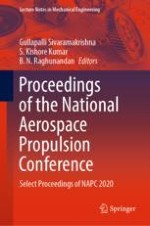This book presents the select proceedings of the 3rd National Aerospace Propulsion Conference (NAPC 2020). It discusses the recent trends in the area of aerospace propulsion technologies covering both air-breathing and non-air-breathing propulsion. The topics covered include state-of-the-art design, analysis and developmental testing of gas turbine engine modules and sub-systems like compressor, combustor, turbine and alternator; advances in spray injection and atomization; aspects of combustion pertinent to all types of propulsion systems and nuances of space, missile and alternative propulsion systems. The book will be a valuable reference for beginners, researchers and professionals interested in aerospace propulsion and allied fields.
